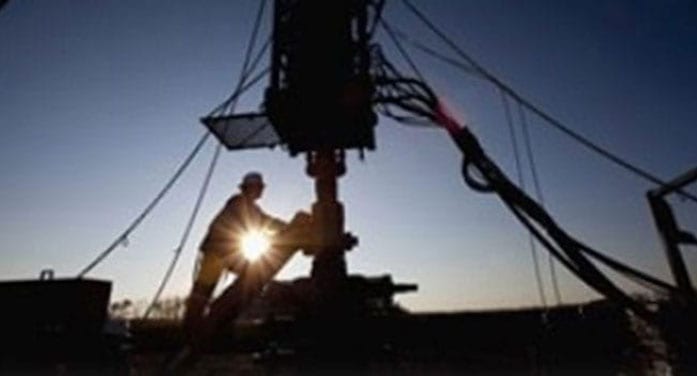By Mark Milke
and Lennie Kaplan
Canadian Energy Centre
History shows tyrannies and autocracies use oil and natural gas as weapons when interacting with democracies. This is obvious during wars – tanks and jets don’t run on vegetable oil – as well as peacetime.
For example, in 2009, Russia cut natural gas supplies to Ukraine in mid-winter. The public reason was a dispute over pricing, but the real reason was to exert pressure on Ukraine’s politicians.

Mark Milke
In 2014, Russian-controlled figurehead Ukraine president Viktor Yanukovych was ousted. Ukraine subsequently found ways to buy less Russian natural gas. As the Atlantic Council’s Daniel Fried notes, Ukraine did so by obtaining supplies from its neighbours. This meant Ukraine mitigated “much of the Kremlin’s energy leverage over them.”
World oil and natural gas production over the last four decades is useful for anti-oil and gas activists to keep in mind in democracies like Canada, United States, Norway, Great Britain and Australia.
To grasp the potential for democracies, it helps to categorize and track oil-and-gas producing countries by their degree of freedom. Washington, D.C., think-tank Freedom House divides countries into categories – free, partly free and not free. These are based on measurements of political rights and civil liberties – everything from media and religious freedom to the right to vote and equality before the law.
In our report on tyranny oil and gas – tyranny being shorthand for countries rated as not free – we match Freedom House measurements with oil and natural gas production data from the U.S. Energy Information Agency.

Lennie Kaplan
For oil production comparisons, we looked at countries with more than half a million barrels of daily production based on annual averages. That allowed us to rank 93 to 96 per cent of all oil production depending on the year.
In 1980, 49 per cent of the world’s oil production occurred in countries that Freedom House ranked as not free, compared with 31 per cent in free countries and 16 per cent in partly free countries. We didn’t classify four per cent given their minimal production.
The low point for the share of oil production by not free countries was in 1990. This was partly due to the opening of the Soviet Union in the late 1980s and continuing into the 1990s. However, by 2020, world oil production from not free countries was back to where it was previously: dominated by not free nations – Saudi Arabia, Russia, China, the United Arab Emirates, Iran, Iraq and others – producing 49 per cent of the world’s oil.
This was due to ranking changes for countries (Russia was partly free in 2010 but not free in 2020) and to production declines in democracies such as Norway and the United Kingdom. In 2020, 33 per cent of the world’s oil came from countries ranked as free, with 10 per cent from those categorized as partly free.
The pattern is slightly different for natural gas through 2018, the most recent year for which statistics are available for all the countries we surveyed. The majority of natural gas production in 1980 was in free countries, at 55 per cent, but declined to about 38 per cent by 2018.
Not free countries produced barely more than a third of the world’s natural gas in 1980 and just eight per cent a decade later. But as of 2010, not free countries dominated worldwide natural gas production at 45 per cent and reached 48 per cent in 2018.
Shares attributed to the three freedom categories have risen or fallen due to changes in country rankings and changes in production volumes in countries where freedom rankings remain constant.
China – always ranked as not free – produced 11 times as much natural gas in 2018 as it did in 1980. That helps explain the higher proportion of not free countries dominant in natural gas production worldwide.
This matters for a variety of reasons, including to citizens in not free countries.
One anti-corruption business group notes that in Russia, “The economy suffers from graft and a misuse of billions of dollars in public revenue from energy sales; however, the government shows little intention of fighting the issue and is oftentimes a beneficiary.”
Transparency International reports that in Saudi Arabia, “almost total opacity in public accounting prevents ordinary Saudis from understanding how much of the state income generated by massive oil revenues ends up as private wealth for the royal family and its clients.”
That’s not to say that free countries should ban oil and natural gas imports from not free nations. That’s not realistic given geography, price, the need for open and free trade wherever possible, and the private sector nature of energy firms and refineries in many countries.
In a world that will still need oil and gas for decades to come – and demand will likely exist long after that – democracies shouldn’t sabotage oil and natural gas production at home. As German, Ukraine and Polish politicians can attest, that’s a counterproductive strategy.
Democracies with oil and natural gas should make such products relatively easy to extract, including to use domestically and export to each other and the rest of the world.
Free countries – Canada being an obvious example – should stay in the game and not leave the field only to autocracies, dictatorships and tyrannies.
Mark Milke and Lennie Kaplan are with the Canadian Energy Centre, an Alberta government corporation funded in part by carbon taxes. They are authors of the report The 2021 Tyranny Index for Oil and Gas.
Mark and Lennie are among our Thought Leaders. For interview requests, click here.
The views, opinions and positions expressed by columnists and contributors are the authors’ alone. They do not inherently or expressly reflect the views, opinions and/or positions of our publication.
© Troy Media
Troy Media is an editorial content provider to media outlets and its own hosted community news outlets across Canada.

